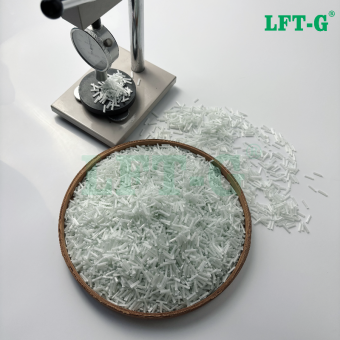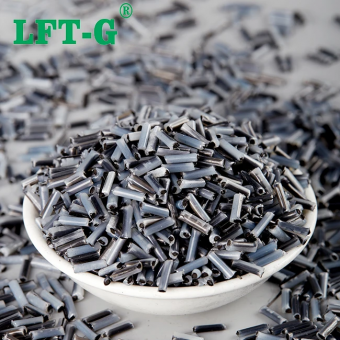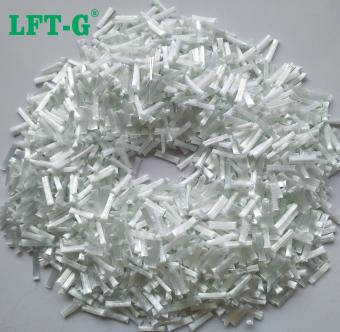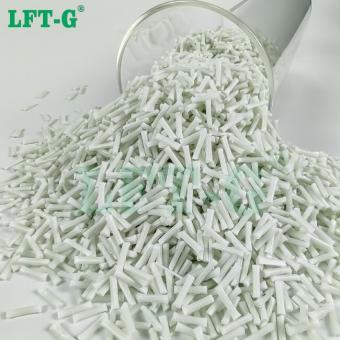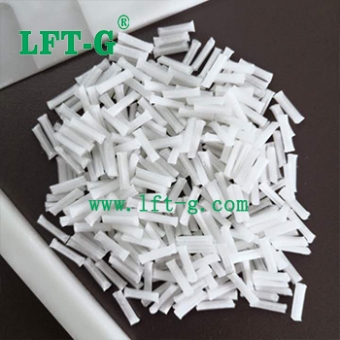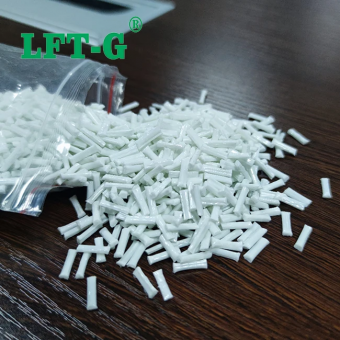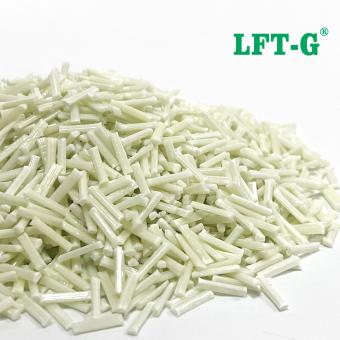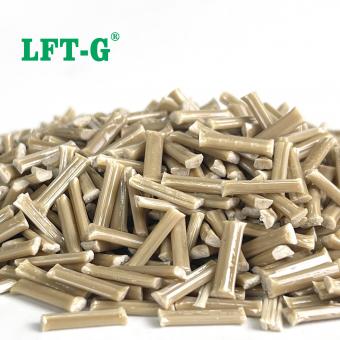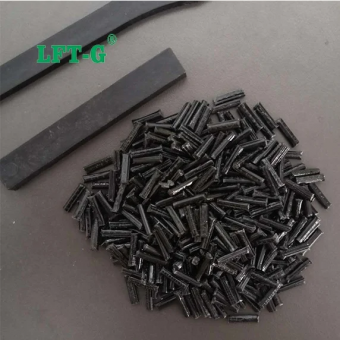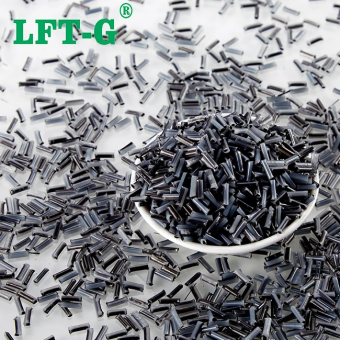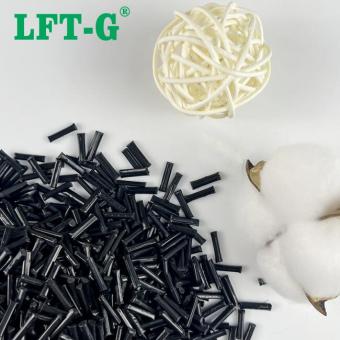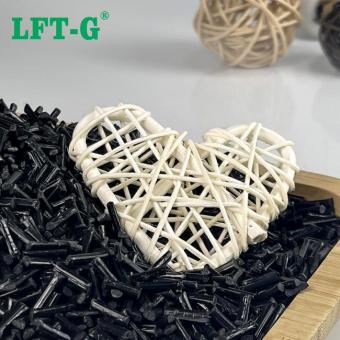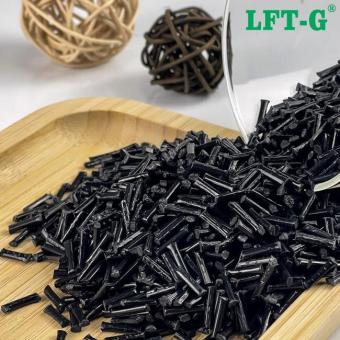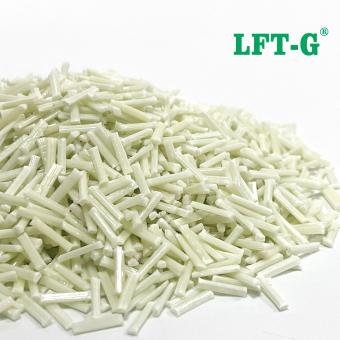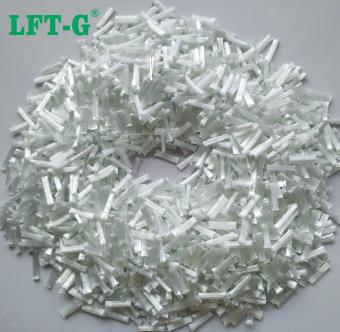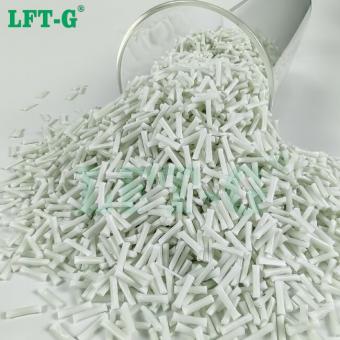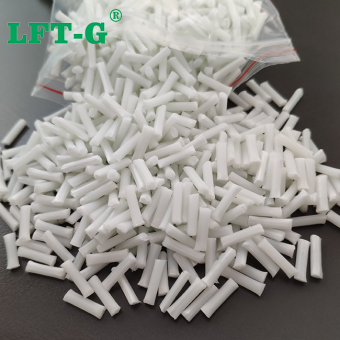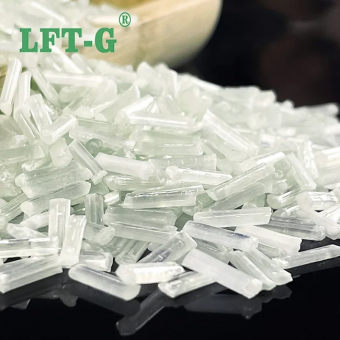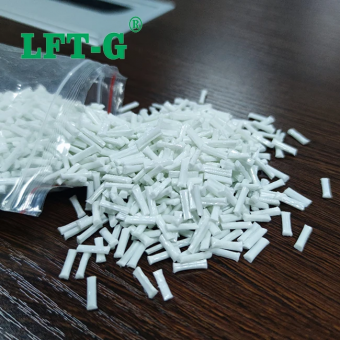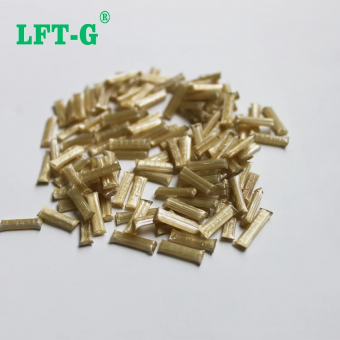-
Technischer Kunststoff Polyamid 12 Kohlenstofffasermodifiziertes PolymerPA12 Langkohlefaserverstärkter Verbundwerkstoff ist ein fortschrittlicher technischer Werkstoff, der aus einer Polyamid 12 (PA12)-Matrix besteht, die mit durchgehenden langen Kohlenstofffasern verstärkt ist. Es zeichnet sich durch hervorragende chemische Beständigkeit, geringe Feuchtigkeitsaufnahme und ausgezeichnete Flexibilität, während der Lieferung hohe mechanische Festigkeit, Schlagfestigkeit und hervorragende Dimensionsstabilität in rauen Umgebungen. Seine geringe Dichte und hervorragende Verarbeitbarkeit machen es ideal für leichte, langlebige Anwendungen, die Präzision und Zuverlässigkeit erfordern.
- PA12-Polymer
- PA12-Pellets
- pa12 zu verkaufen
- Kohlefaser-Nylon PA12
- Nylon 12-Material
- Entflammbarkeitseigenschaften
Tags :
-
LFT Polyamid 66 Kunststoff Kohlefasermodifiziertes PolymerharzPA66 Langkohlefaserverstärkter Verbundwerkstoff ist ein hochwertiger Werkstoff aus einer Polyamid 66 (PA66)-Matrix, verstärkt mit endlosen langen Carbonfasern. Er bietet außergewöhnliche Zugfestigkeit , Schlagfestigkeit, Und hohe thermische Stabilität, zusammen mit ausgezeichnete chemische Beständigkeit und Maßgenauigkeit unter anspruchsvollen Bedingungen.
- Materialien Nylon
- PA CF-Filament
- PA-Kunststoffmaterial
- verschiedene Arten von Kohlefasern
- Stärke Kohlefaser
- pa6.6 cf
Tags :
-
Nylonmaterialien LFT Kohlefasermodifizierte PolymerpelletsPA6 Langkohlefaserverstärkter Verbundwerkstoff ist ein Hochleistungswerkstoff technisches Material besteht aus einer Polyamid 6 (PA6)-Matrix, die mit langen Kohlenstofffasern verstärkt ist. Es liefert hervorragende mechanische Festigkeit, Steifigkeit und Ermüdungsbeständigkeit , unter Beibehaltung ausgezeichnete Dimensionsstabilität und Wärmeleistung .
- lange Fasern
Tags :
-
Modifiziertes Polypropylen mit hervorragender FestigkeitPP-Langkohlenstofffaser-verstärkter Verbundwerkstoff ist ein Hochleistungs-Leichtbau Material basierend auf Polypropylen Matrix verstärkt mit langen Kohlenstofffasern, bietet hervorragende Festigkeit, Steifigkeit und Ermüdungsbeständigkeit .
- pp cf
- Polypropylen-Kohlefaser
- Wofür werden Kohlenstofffasern verwendet?
- CFK-Material
- Schmelztemperatur der Kohlenstofffaser
- Kohlefaserdruck
Tags :
-
LFT-G™ Premium-Homopolymer-Polypropylen (PP) mit langen Kohlenstofffasern für HochleistungsanwendungenUnser Lange Kohlefaser PP ist ein Hochleistungs-Polypropylen-Verbundwerkstoff , entwickelt für außergewöhnliche Festigkeit und geringes Gewicht, wodurch es sich ideal für anspruchsvolle Anwendungen wie Autoteile eignet.
- Kohlefaserverstärktes Polypropylen
- Kohlefaser-PP für die Automobilindustrie
- Leichter Carbonfaser-Kunststoff
- Langer Kohlenstofffaser-Kunststoff
- Kohlefaserverstärktes Polypropylen
- Hochleistungs-PP
Tags :
-
Technisches MXD6-LFT-Material für die Automobil- und ElektronikindustrieMXD6 Nylon – MXD6 ist eine Art kristallines Polyamidharz, das durch Kondensation von m-Benzoylamin und Adipinsäure synthetisiert wird. Die Vorteile von Nylon MXD6 1. In einem weiten Temperaturbereich, halten hohe Festigkeit, hohe Steifigkeit 2. Hohe thermische Verformungstemperatur und kleiner Wärmeausdehnungskoeffizient 3. Niedrige Wasseraufnahmerate, geringe Größenänderung nach der Wasseraufnahme, geringere Verringerung der mechanischen Festigkeit 4. Die Formschrumpfungsrate ist sehr gering und eignet sich für die Präzisionsformverarbeitung 5. Ausgezeichnete Beschichtung, besonders geeignet für Hochtemperatur-Oberflächenbeschichtung 6. Sauerstoff, Kohlendioxid und andere Gase haben ebenfalls eine ausgezeichnete Barriere Anwendung von MXD6 in der Kunststoffmodifizierungsindustrie MXD6 kann mit Glasfaser, Kohlefaser, Mineralien und/oder modernen Füllstoffen zur Verwendung in glasfaserverstärkten Materialien mit einem Glasfaseranteil von 50–60 % kombiniert werden und sorgt für außergewöhnliche Festigkeit und Steifigkeit. Selbst bei Füllungen mit hohem Glasanteil erzeugt die glatte, harzreiche Oberfläche eine faserfreie Hochglanzoberfläche, die sich ideal zum Lackieren, Metallisieren oder zur Herstellung natürlich reflektierender Schalen eignet. 1. geeignet für hohe Liquidität von dünnen Wand Es handelt sich um ein sehr flüssiges Harz, das selbst bei einem Glasfaseranteil von bis zu 60 % problemlos dünne Wände mit einer Dicke von nur 0,5 mm füllen kann. 2. Hervorragende Oberflächenbeschaffenheit Eine harzreiche, perfekte Oberfläche weist selbst bei hohem Glasfaseranteil ein hochglanzpoliertes Aussehen auf. 3. Hohe Festigkeit und Steifigkeit Die Zug- und Biegefestigkeit von MXD6 ähnelt der vieler Gussmetalle und Legierungen mit einem Zusatz von 50–60 % glasfaserverstärktem Material. 4. gute Dimensionsstabilität Bei Raumtemperatur ähnelt der lineare Ausdehnungskoeffizient (CLTE) von MXD6-Glasfaserverbundwerkstoffen dem vieler Gussmetalle und -legierungen. Hohe Reproduzierbarkeit durch geringe Schrumpfung und die Fähigkeit, enge Toleranzen einzuhalten (Längentoleranzen von bis zu ± 0,05 % bei korrekter Formgebung). Technisches Datenblatt Von unserem eigenen Labor getestet, nur als Referenz. Labor & Lager Häufig gestellte Fragen 1. Wie wählt man den Fasergehalt des Produkts aus? Ist das größere Produkt für Material mit höherem Fasergehalt geeignet? A. Das ist nicht absolut. Ein höherer Glasfaseranteil ist nicht unbedingt besser. Der geeignete Anteil muss lediglich den Anforderungen des jeweiligen Produkts entsprechen. 2. Können Produkte mit optischen Anforderungen aus langfaserigen Materialien hergestellt werden? A. Das Hauptmerkmal der thermoplastischen LFT-G-Langglasfasern und Langkohlefasern sind die mechanischen Eigenschaften. Wenn der Kunde helle oder andere Anforderungen an das Erscheinungsbild der Produkte hat, muss dies in Kombination mit spezifischen Produkten bewertet werden. 3. Gibt es besondere Prozessanforderungen für Spritzgussprodukte aus langen Kohlefasern? A. Wir müssen die Anforderungen an Langfasern für die Schneckendüse der Spritzgussmaschine, die Formstruktur und den Spritzgussprozess berücksichtigen. Langfasern sind ein relativ teures Material, und bei der Auswahl muss das Kosten-Leistungs-Verhältnis berücksichtigt werden. Hauptmaterialien Warum uns wählen 1. Integration von Forschung und Entwicklung, Produktion und Vertrieb 2. Maßgeschneiderte Produkte, individueller Pre-Sales- und After-Sales-Service 3. Eine Reihe von Systemzertifizierungen bestanden, und die Produktqualität ist stabil 4. Fünf Lagerzentren im ganzen Land, um den hohen Bedarf der Kunden zu decken 5. Die Tests werden in einem unabhängigen Labor mit technischen Experten mit 30 Jahren Erfahrung durchgeführt 6. Weltweiter Verkauf nach Asien, Europa, Nordamerika und in den Nahen Osten
- Hochleistungs-MXD6
- MXD6-Verbundwerkstoff für Drohnenrahmen
- MXD6-Ersatz für Metall
- langfaserverstärkte Thermoplaste
- hochsteife Thermoplaste für UAV
- China MXD6 Langglasfaser Lieferant
Tags :
-
Langfaserthermoplast mit biobasierter PLA-MatrixPolyphthalamid ist ein Hochleistungs Harz und Mitglied der Nylon-Familie mit außergewöhnlichen thermischen, mechanischen und physikalischen Eigenschaften. Es ist hygroskopisch, undurchsichtig, teilkristallin und kann im Kunststoffspritzguss verwendet werden. Die meisten PPA sind gefüllt mit Glasfaser oder Kohlefaser um die Steifigkeit für Hochtemperaturanwendungen zu erhöhen. Daher wird PPA häufig in Anwendungen eingesetzt anstelle von Metall oder teurerem Thermoplast .
- Biokunststoff-Verbundwerkstoff PLA
- umweltfreundliches hochfestes PLA
- 3D-Druck-Filamentmaterialien
- biologisch abbaubarer PLA-Glasfaserverbundstoff
- PLA Langfaser für den 3D-Druck
- Glasfaser-PLA-Verbindung
Tags :
-
HDPE-Spritzgussfüllung mit langglasfaserverstärkten thermoplastischen VerbindungenUnser langglasfaserverstärktes HDPE-Material bietet außergewöhnliche Festigkeit, Schlagfestigkeit und Dimensionsstabilität und ist somit ideal für strukturelle und industrielle Anwendungen . Entwickelt für leichte Leistung und Haltbarkeit, wird es häufig verwendet in Automobil-, Logistik- und Hochleistungs-Spritzgussteile .
- HDPE GF verstärkt
- faserverstärkte Kunststoffe (FVK)
- OEM-Hersteller von HDPE-Verbundwerkstoffen
- PE LGF Hersteller
- chemikalienbeständiges HDPE
- hochsteifes HDPE für technische Anwendungen
Tags :
-
Verstärkte ABS-Compounds mit Langglasfasern für AutomobilteileABS-Spritzguss bezeichnet den Prozess des Einspritzens von geschmolzenem ABS-Kunststoff unter hohem Druck und hohen Temperaturen in eine Form eingebracht. Es gibt viele Spritzgussanwendungen da es sich um einen weit verbreiteten Kunststoff handelt und in der Automobil-, Konsumgüter- und Bauindustrie um nur einige zu nennen.
- verstärkter ABS-Kunststoff
- ABS für elektrische Gehäuse
- bestes ABS-Material für Automobilanwendungen
- langlebiger ABS-Verbundwerkstoff
- ABS-Strukturkunststoff
- ABS LGF-Material
Tags :
-
LFT Thermoplastisches TPU-Langglasfaser-VerbundspritzgussProduktnummer: TPU-NA-LGF Produktfaserspezifikation: 20 % - 60 % Produktmerkmale: Hohe Zähigkeit, Hohe Belastbarkeit, Geringe Wasseraufnahme, Hohe Dimensionsstabilität, Chemikalienbeständigkeit, gutes Produktaussehen.
- TPU-Verbundmaterial
- strukturelle TPU-Verbindung
- verschleißfestes TPU mit Fiberglas
- nachhaltige TPU-Verbundwerkstoffe
- TPU-Verbundwerkstoff für Sportgeräte
- fortschrittliche thermoplastische Verbundwerkstoffe
Tags :
-
PBT-Kunststoff-verstärkte Compounds mit langen FasernPolyphthalamid ist ein Hochleistungs Harz und Mitglied der Nylon-Familie mit außergewöhnlichen thermischen, mechanischen und physikalischen Eigenschaften. Es ist hygroskopisch, undurchsichtig, teilkristallin und kann im Kunststoffspritzguss verwendet werden. Die meisten PPA sind gefüllt mit Glasfaser oder Kohlefaser um die Steifigkeit für Hochtemperaturanwendungen zu erhöhen. Daher wird PPA häufig in Anwendungen eingesetzt anstelle von Metall oder teurerem Thermoplast .
- PBT-Verbundwerkstoff
- leichter PBT-Kunststoff für Drohnen
- Vergleich PBT GF30 vs. GF50
- Technischer Kunststoff PBT
- Glasfaser-PBT für Batteriegehäuse
- hitzebeständige PBT-Thermoplaste
Tags :
-
LFT Polyphenylensulfid PPS LangfaserpelletsEngineer PPS gefüllt Langglasfaserverstärkt ist eine Art von technischen modifizierten Kunststoffmaterialien aus langglasfaserverstärktem PPS
- Glasfaserverbindungen
- Polyphenylensulfid PPS Anti-Aging
- PPS-Polymerpellets
- Modifiziertes PPS
- PPS GF
Tags :

 Email
Email Deutsch
Deutsch English
English français
français русский
русский italiano
italiano español
español português
português العربية
العربية 日本語
日本語 한국의
한국의 中文
中文




